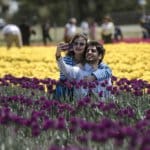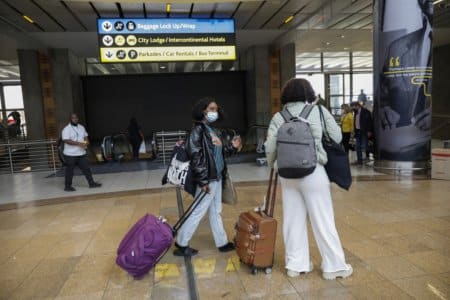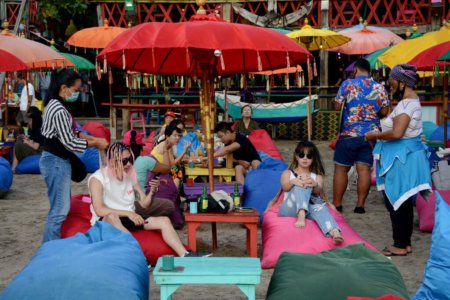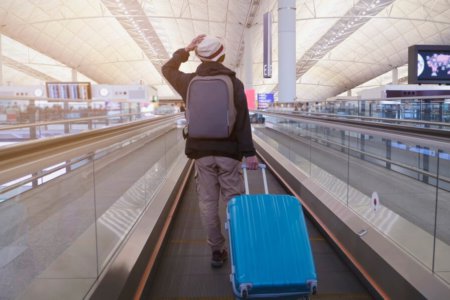
Your university days will be the best years of your life – for international students, this can’t be true enough.
This is when you’re not constrained by supervision and regular schooling hours, a time to seize the opportunities to explore more of the world while you’re already out here.
If you’re anywhere in Asia, then it’s the perfect time to make your way to the best Asian countries to travel to.
Your family is likely already paying a lot for tuition and living expenses — which is why these destinations are perfect for students travelling on a budget.
Plus, you’re already close to other countries — cities, towns and places unexplored and promising adventure and memories that’ll last a lifetime.
Travelling to these spots is now cheaper and more accessible, and with Asia’s host of unique countries, we forecast happy travels in the future.
Criteria for the best Asian countries (or for travelling in general!)
There are many ways to categorise a place as the best or worst to travel.
While most who share their lists base it on personal experiences, another way to look at it is how hard (or how easy) it’ll be for you to plan things — spontaneously or months in advance.
Here are four things that we’re taking into account:

A Japanese sushi master prepares sushi with fresh wasabi at his restaurant in Tokyo. Source: AFP.
1. How strong the country’s currency is against yours
When you’re working with a limited budget, it’s important to know what you (or your travel group) are willing to spend on.
Going to countries with strong currencies against your home country’s currency will have you juggling opportunity costs at every turn.
But with the right approach, you can still have a great time.
For example, you can share a hostel room with up to 16 people in favour of having more to spend on food.
Or you could only feast on convenience store meals and indulge in all other experiences available – which, sometimes, can be the best part about your travels.
After all, it’s one thing to enjoy an omakase at your favourite restaurant outside of Japan, but a whole other experience when you have it in the country of origin.

A participant in the “Pink Parade,” a Pride celebration in Nice, southeastern France. Source: AFP.
2. Safety
It can be daunting to travel to a foreign country – there’s a lot to consider, and safety is the most significant factor of them all.
Checking if the place you’re visiting is known for homicide, crime, pollution, civil unrest, terrorism, and natural disasters should be done before deciding the location(s) for travel.
If it does not deter you from travelling there, it will at least prepare you for any potential risks and problems.
Travelling in groups, especially with people you’re familiar with, eases the worry as you’re all in this together.
There is safety in numbers, and having someone to rely on is always welcomed, even if it’s just to help keep an eye on your belongings or help navigate the transport systems.
Solo travelling, however, is another matter altogether.
You’re in this alone, and while the world still has good people, it’s essential always to stay vigilant. Unfortunately, solo female travellers have it harder.
Still, with the proper research, you can do your best to avoid some of the negatives that come with this fulfilling experience.
Those in the LGBTQ+ community will need to do some extra research too.
As of 2024, same-sex marriages are legally performed and recognised in 35 out of 195 countries in the world, while other countries have a strong oppositional stance on the queer community.
LGBTQ+ folks can face severe challenges, prejudices, and threats for their involvement with the community, even facing prosecution at certain degrees.

A multilingual sign in New York. Source: AFP.
3. Can you speak their language?
The world feels smaller now thanks to advances in technology and globalisation.
However, this doesn’t mean that your beginner Duolingo lessons can carry you through an in-depth conversation with a local speaking with all the extensive vocabulary, slang, and connotations.
While English remains one of the world’s most spoken languages, with over 1.5 billion people speaking it, and is the global lingua franca, there are still places that no one can speak it.
This applies to signs too – most major cities have multilingual signages for easy navigation, an occurrence that dwindles the further you go from places with a high volume of tourists.
So, this is a fantastic time to pick up one of the world’s most popular languages before you head into your travels.
It’ll be good to avoid any Google Translate mishaps, and you might even get something nice out of trying to speak the local language too.

The power behind your passports can determine where you get to go and whether you have to apply for a visa to get there. Source: AFP.
4. How easy it is to get there
If your passport is within the top ranks of the Global Passport Ranking, congratulations.
The 2024 results revealed that citizens of France, Germany, Italy, Japan, Singapore, and Spain can enjoy visa-free or visa-on-arrival access to an incredible 194 destinations worldwide – the highest number recorded since the Henley Passport Index began tracking global travel freedoms 19 years ago.
Requiring a visa to travel can throw a wrench into carefully made plans.
Tourist visa fees can go up to as high as an average country-to-country fee of US$127 for the US, one of the most expensive in the world. Some countries even require interviews and passing “character requirements” before you can visit.
For those travelling on a budget, this additional fee might be a deterrent, so be sure to conduct thorough research about a country’s immigration rules before you settle on where to visit.
That’s not the only thing to look up too – whether you’re the kind of traveller who creates an itinerary or plays your travels by ear, you’ll want to find out how to travel within a country, be it from district to district or state to state.
Asia doesn’t boast the same walkable cities that Europe does, but other means of transport are readily available as long as you know what to look for.
Are these the worst Asian countries to travel to?
Before going into the best Asian countries to travel as a student, here is a quick look at these three countries and not many visitors are fans:
Turkmenistan
Located at the heart of the fabled Silk Road, Turkmenistan requires everyone to obtain a visa to enter the country.
You must join a guided tour throughout your time in the country, which can only be done through a government-approved travel agency.
Brunei
The first East Asian country to adopt strict Islamic Sharia law in 2014, Brunei holds a conservative stance on LGBTQ+ rights.
In 2019, the country came under international scrutiny for its laws revolving around punishing homosexual acts and adultery with death by stoning.
Those identifying as LGBTQ+ are advised to exercise caution and discretion while in Brunei.
India
Cultural richness and architectural sights aside, street harassment, concerns for food safety and hygiene, and prevalent scams are some of the issues that pop up when travelling in India.
Tap water in India is unsafe to drink, and even brushing your teeth with it can cause stomach problems, so travellers should only use bottled drinks when in the country.
The best Asian countries for students travelling on a budget
If we’re ticking off the criteria mentioned earlier, you’re still left with an extensive list of uniquely beautiful countries to visit. Here’s the list narrowed down:

A tourist poses in front of Ragestan palace, in the ancient Uzbek city of Samarkand. If you’re travelling on a budget, the landlocked country in Central Asia is a great choice. Source: AFP.
Best value for money: Uzbekistan
Uzbekistan offers visa-free travel for more than 60 nationalities. Here, you can broaden your horizons of one of Central Asia’s most welcoming cities and explore what used to be the heart of the Silk Road to your heart’s desire.
Safest: Singapore
According to the Global Peace Index, Singapore is the safest Asian country in the world.
With a low risk of earthquakes and tsunamis due to the country’s placement, incredible healthcare system, and an improving outlook for the LGBTQ+ community, you can have peace of mind as you travel the country.
Great English: The Philippines
Being one of the world’s most linguistically diverse countries with 183 live languages, the Philippines hosts a month-long celebration of its linguistic diversity in August (known as Buwan ng Wika, or Language Month).
Filipinos are also ranked second in Asia for their English fluency.

People cross a street while a “shinkansen”, or bullet train, arrives at a station in Tokyo. Source: AFP.
Most convenient: Japan
Citizens of 70 countries and regions can enter Japan for up to 90 days for tourism purposes with a free visa upon arrival, and while there is a learning curve to it, Japan’s public transport system is second to none.
The bigger cities are walkable too, so you get to thoroughly enjoy the country even with just a stroll.
And if you’re ever uncertain, Japan began introducing bilingual signs to prepare for the increase in foreign visitors before the 2020 Tokyo Olympics and Paralympics, so navigating the country’s major cities won’t be an issue.










